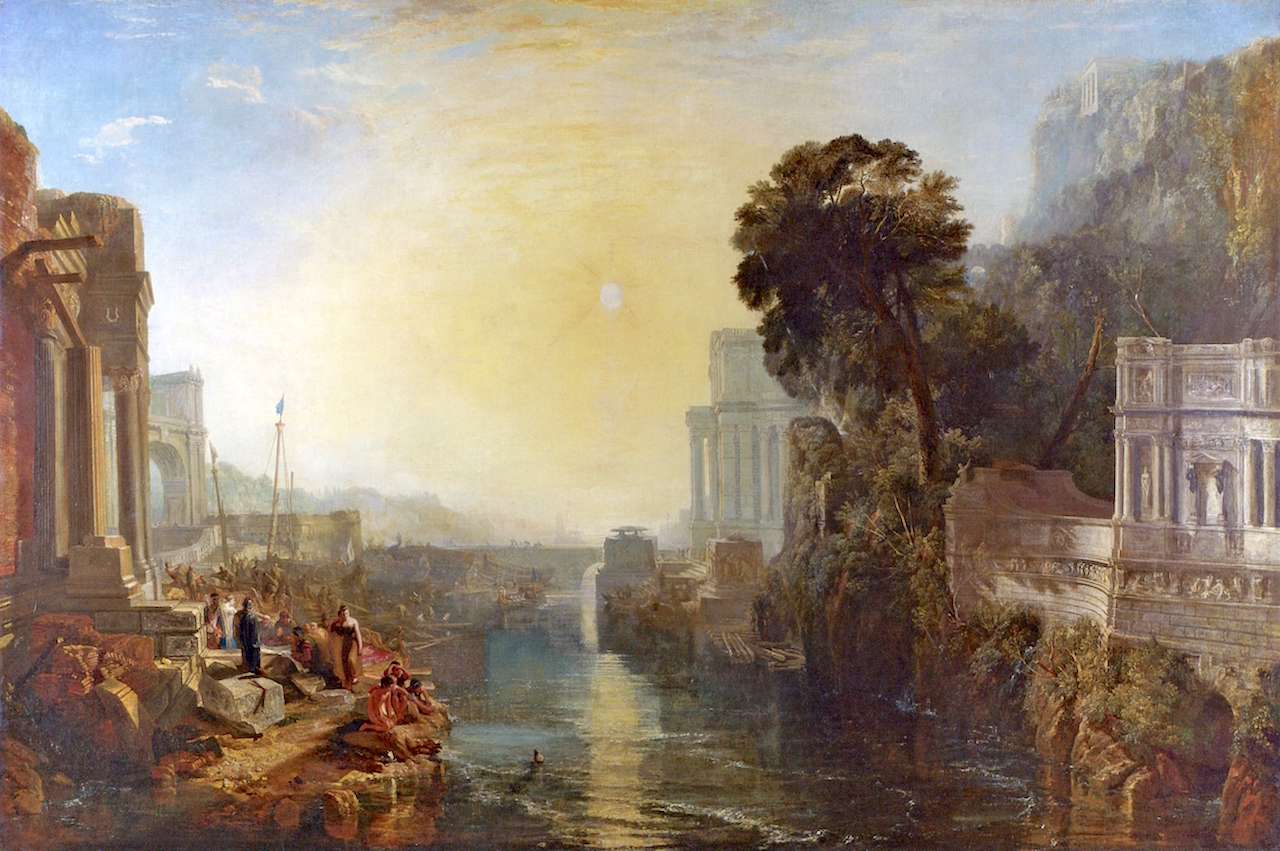Turner
| General Informations | |
|---|---|
| Name | Joseph Mallord William Turner |
| Birth | 23 April, 1775 |
| Death | 19 December, 1851 |
| Movements | Romanticism |
| Music | Eric Alfred Leslie Satie (17 May 1866 - Paris, 1 July 1925) - Gymnopedie n. 1 |
William Turner has always been interested in the relationship between men and nature, and the resulting sese of energy and terror felt by te former in front of the unleashed force of the elements (what the romantics used to call 'sublime').
Tempestuos seas, shipwrecks and typhoons are some of his main themes, where nature is hostile and overwhelming.
A few words about the music
Eric Satie was a French composer, forerunner of the minimalist movement. He wrote, among his other works, 5 Gymnopedies: the first (and most famous) one is featured in this video.
Selected works
Dido Building Cartage - National Gallery, London.
This picture is situated next to Lorrain's "Embarkation of the Queen of Sheba" as Turner himself expressly asked. These two paintings have many elements in common:
- same format and very similar dimensions (in prevision of their proximity).
- representation a mythological event of the past, with two women as main characters
- classical landscape with ancient buildings
- sea in the center, with consequent beautiful light effects
- different depth layers, with oblique fugue lines and faded background
- palaces and trees enclosing the scene, like theater curtains

Hannibal Crossing the Alps
Despite what one may think reading the title, this is all but a classical history painting. Human action is by far less important than the unleashing of the natural forces: the tempest is a destructive vortex that overwhelms the general's army, totally vulnerable and without defences against natural phenomena.





